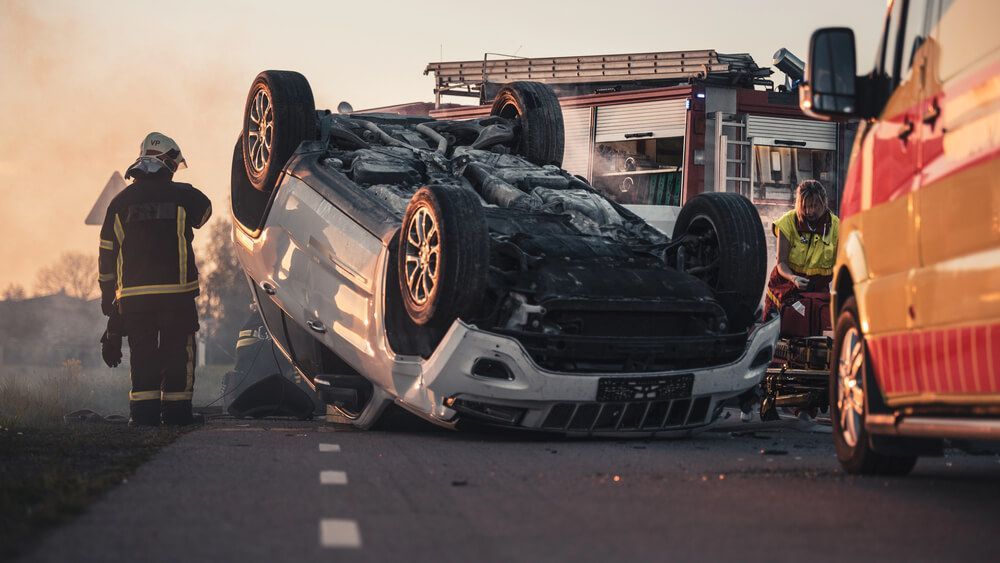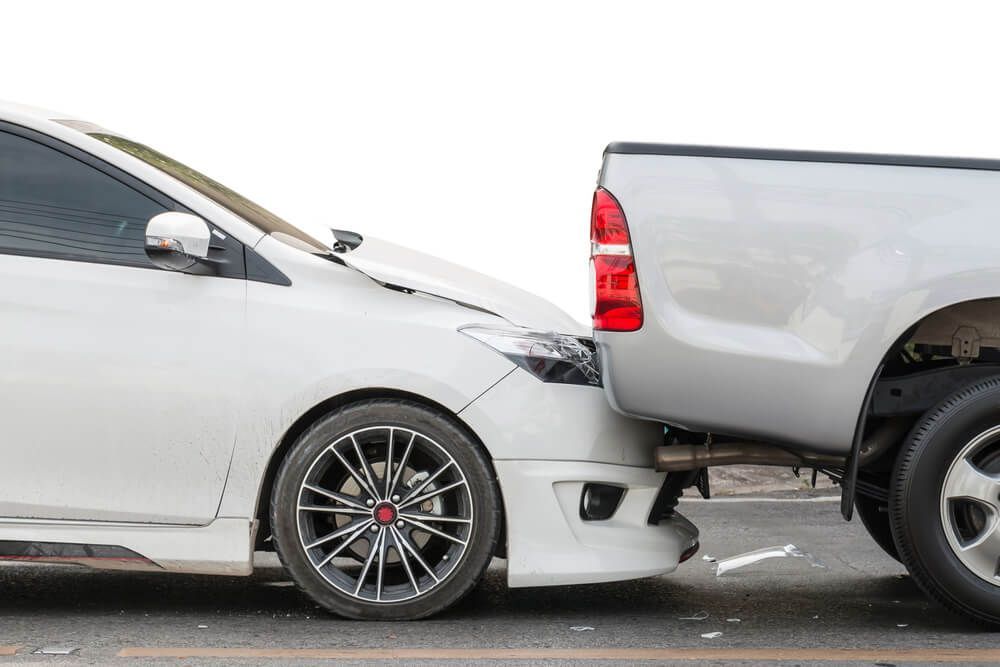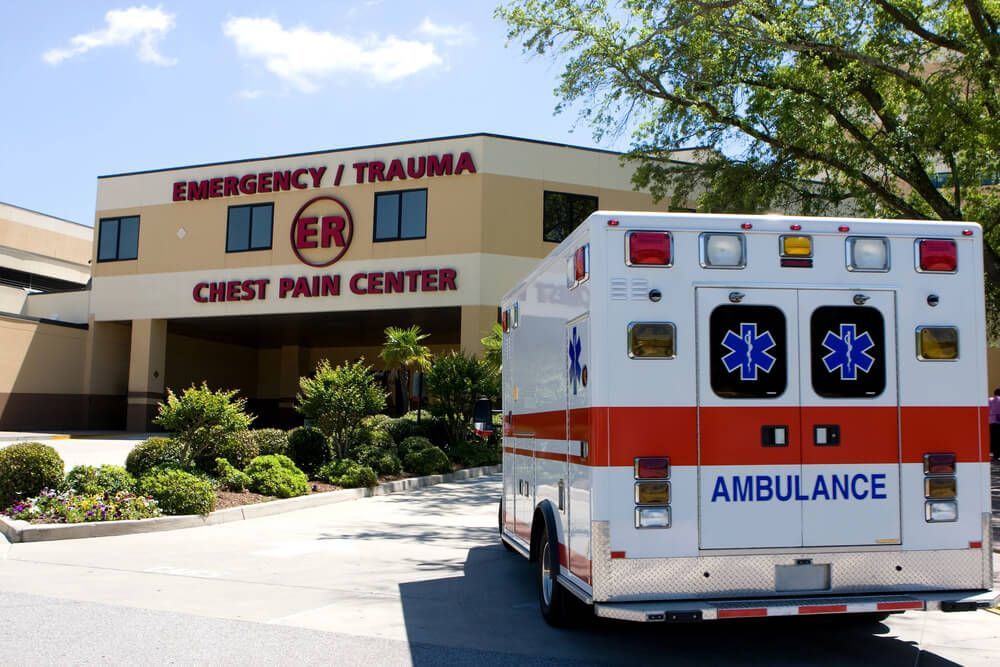What Duty of Care Means in a Personal Injury Case
Recent Blog Posts
What Duty of Care Means in a Personal Injury Case
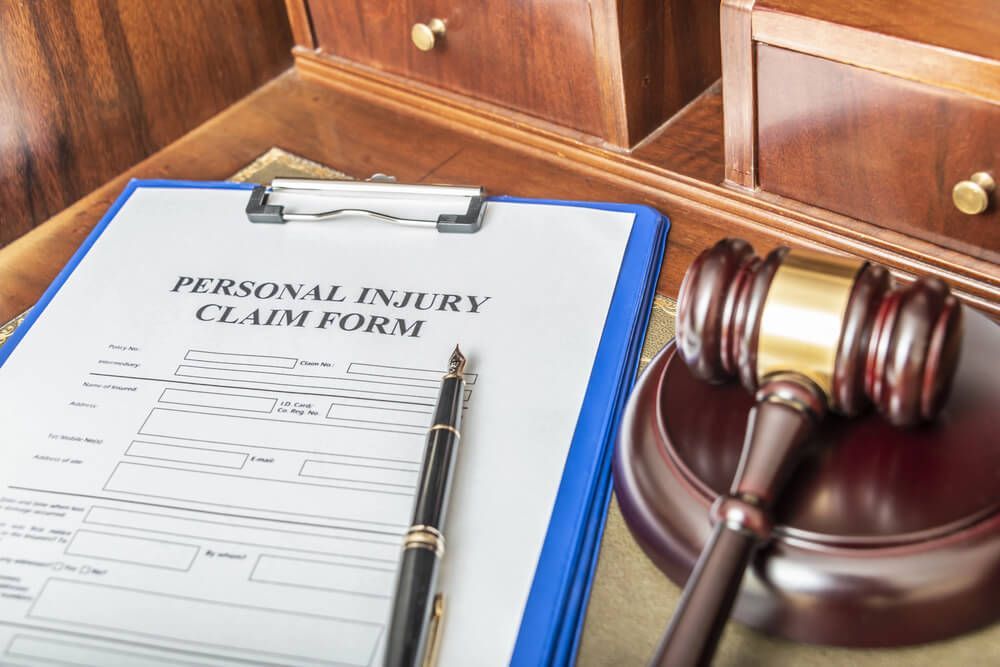
When you’re injured in an accident, car or otherwise, one of the first legal questions to consider is whether someone else owed you a duty of care and if they failed to meet it. This concept forms the foundation of most personal injury cases.
Understanding the meaning of “duty of care,” how it’s proven and what counts as a breach can help you discover if you have a valid claim for compensation under Arizona law.
What Is Duty of Care in a Personal Injury Claim?
In personal injury law, the definition of duty of care is the legal obligation a person or entity has to act reasonably to avoid causing harm to others. The scope of this duty depends on the relationship between the parties and the circumstances.
If someone fails to meet their duty of care and you’re injured as a result, they may be legally responsible for your damages. Hiring a lawyer early on can help you understand the next steps in pursuing compensation.
What Are the Key Elements of Duty of Care in Personal Injury Law?
Duty of care is a fundamental concept in personal injury law, but it’s not always immediately clear when it applies. To determine whether someone has a duty of care, several key elements must be established.
Recognized Legal Relationship
To establish a duty of care, there must be a legally recognized relationship between the defendant and the plaintiff. This relationship forms the foundation for determining whether a duty of care exists. Common examples of recognized relationships include:
- Driver/Pedestrian: A driver owes pedestrians a duty to obey traffic laws and operate their vehicle safely.
- Doctor/Patient: A healthcare provider has a duty to provide competent medical care to their patients.
- Employer/Employee: Employers have a responsibility to ensure their employees work in a safe environment, free from unnecessary hazards.
These relationships create the legal framework in which a duty of care is defined, establishing the defendant's responsibility for ensuring the safety and well-being of others within the scope of that relationship.
Foreseeability of Harm
In many states, another key component in establishing a duty of care in negligence cases is the foreseeability of harm. In other words, the defendant must have been able to reasonably foresee that their actions or inactions could cause damage to the plaintiff. The law often assesses foreseeability by asking whether a reasonable person in the defendant’s position would have anticipated that their behavior could cause injury.
For instance, if a driver runs a red light, it’s foreseeable that they might cause an accident with another vehicle. Similarly, a property owner who ignores a broken staircase is arguably aware that someone could trip and injure themselves. Foreseeability plays a critical role in determining whether the defendant's conduct was negligent and whether they should be held accountable for the injury.
However, under Arizona law, foreseeability is not a factor used to determine the existence of a duty. It is considered later, when assessing whether the breach actually caused the injury.
Standard of Care
The standard of care refers to the level of caution and concern an ordinary, reasonable person would exercise under similar circumstances. This standard varies depending on the situation, but it generally sets a baseline for what is considered acceptable behavior. In some cases, laws and regulations help define what constitutes the standard of care (such as OSHA standards for workplace safety).
In other instances, the standard may be based on common sense or general principles of reasonableness, as noted by legal experts. Arizona law, for example, defines the standard of care in medical malpractice cases as the degree of care, skill and learning expected of a reasonable health care provider in the same field and circumstances. If the defendant’s actions fall short of this expected standard, it can be considered a breach of their duty of care.
What Is a Breach of Duty?

A breach of duty occurs when someone fails to meet the level of care expected in a given situation. This doesn’t always mean intentional harm. Often, it’s about negligence or carelessness. Proving a breach is one of the most important parts of any personal injury case. If a settlement can’t be reached, litigation may be necessary to prove the breach in court.
What Are Examples of a Breach of Duty?
Understanding the theory of duty and breach is helpful, but real-world examples make the concept more concrete. A breach of duty can arise in countless ways, depending on the relationship and circumstances. Below are some of the most common situations lawyers see in personal injury cases.
Reckless Driving
Drivers have a duty to follow the rules of the road and operate vehicles safely. Reckless driving is one of the most frequent causes of personal injury cases because it so often leads to severe accidents. Other examples include:
- Speeding excessively in heavy traffic.
- Driving under the influence of drugs or alcohol.
- Running red lights or ignoring stop signs.
- Texting or otherwise driving while distracted.
Courts and insurers typically look at police reports, witness statements and traffic camera footage to determine if a breach occurred.
Failure To Maintain Safe Premises
Property owners have a duty to ensure their premises are reasonably safe for visitors. Failure to do so can lead to hazardous conditions that result in injuries. Common breaches include:
- Failing to clean up spills in aisles.
- Ignoring broken steps, railings, or lights.
- Not securing dangerous items or machinery.
- Allowing wet floors or icy sidewalks to go untreated.
Courts and insurers often look at incident reports, photographs and inspection records to determine whether the property owner met their duty of care.
Negligent Security
Property owners have a duty to protect visitors from foreseeable criminal harm. Breaching that duty can lead to dangerous situations where injuries or assaults occur. Examples of negligence include:
- Not hiring security personnel for high-risk areas.
- Failing to install sufficient lighting in parking lots or hallways.
- Not monitoring surveillance cameras or gates.
- Leaving doors, gates, or other access points unlocked in high-crime areas.
When security lapses lead to harm, courts often review police reports, surveillance footage and crime statistics in the area to determine if the property owner failed to provide reasonable protection.
Workplace Safety Failures
Employers are responsible for providing a safe working environment, free from unnecessary hazards. Breaches in this duty are common in industrial and construction settings but can occur in any workplace. Examples include:
- Not providing proper personal protective equipment (PPE).
- Ignoring or failing to address safety concerns raised by employees.
- Allowing unsafe machinery or equipment to remain in use.
- Not complying with safety regulations or industry standards.
Workplace safety claims often involve inspection reports, safety training records and employee testimony to determine whether the employer met their duty of care.
Medical Malpractice
Healthcare professionals owe their patients the duty to provide care that meets the accepted standard in their field. A breach occurs when a doctor, nurse, or other healthcare provider fails to meet that standard, leading to harm. Examples include:
- Misdiagnosing a patient’s condition or failing to diagnose it altogether.
- Administering the wrong medication or improper dosage.
- Performing surgery on the wrong body part.
- Failing to monitor a patient’s condition post-surgery or treatment.
Medical malpractice claims often rely on expert testimony to establish what the appropriate standard of care should have been and to explain how the provider’s actions fell short.
Losing Control of a Dog
Dog owners have a responsibility to keep their pets under control and ensure they don’t pose a risk to others. A breach occurs when an owner fails to control an animal and it causes harm. Common breaches include:
- Allowing a dog to roam freely without a leash in public areas.
- Not warning others about a dog’s known aggressive behavior.
- Failing to properly secure gates or fences that could let the dog escape.
Courts often look at local leash laws, the dog’s past behavior and the owner’s response to complaints to determine whether the owner failed to meet their duty of care.
In many jurisdictions, liability is strict. If the dog is unprovoked and it bites someone who is in a public place or lawfully on private property, the owner is liable for the injuries regardless of the dog’s prior behavior or the owner’s knowledge of any viciousness.
Designing Unsafe Products
Manufacturers, designers and distributors have a duty to ensure their products are safe for consumer use. A breach occurs when the design or manufacturing process leads to a dangerous or defective product. Examples include:
- Designing a product without adequate safety features.
- Failing to include necessary warning labels or instructions.
- Producing defective items due to faulty materials or poor manufacturing.
- Failing to recall products known to be unsafe after they’ve been sold.
Product liability cases often involve expert testimony to explain how the product design or manufacturing process created unreasonable risks that led to the injury.
How Can You Hold Someone Liable for a Breach of Duty?

To hold someone accountable for breaching their duty of care, you must establish that all four elements of negligence are present: duty, breach, causation and damages. If you can show that the defendant owed a duty to you, failed to meet that duty, caused your injury through their actions and that you suffered harm as a result, they can be held liable for your damages.
These elements ensure that claims are based on clear legal principles rather than accidents where no person or group was at fault. Let’s take a closer look at each of these elements.
1. Existence of a Legal Duty
The first step is showing that the defendant actually owed a duty of care to the injured party. This duty typically arises out of the relationship between the two. Without establishing this duty, the claim cannot move forward, even if serious harm occurred. Proving the existence of a legal duty usually involves looking at legal precedents, state laws and the circumstances of the relationship.
2. Breach of Duty
Once duty is established, the next question is whether the defendant failed to live up to it. A breach occurs when someone acts in a way that a reasonably careful person would not have in the same situation. Proving breach often involves comparing the defendant’s conduct to what society would expect of a “reasonable person.”
3. Causation
Even if a duty was breached, you must still prove that the breach directly caused the injury. In personal injury law, causation is typically divided into two parts: cause-in-fact and proximate cause. Because these two parts can be difficult to establish, causation is often the most hotly contested issue in a personal injury case.
Cause-in-fact means the harm would not have happened “but for” the defendant’s actions. For example, a crash would not have occurred but for a driver texting behind the wheel. This element is about drawing a straight line between the negligent act and the injury that followed.
Proximate cause, on the other hand, asks whether the harm was a foreseeable result of the defendant’s conduct. If a driver runs a stop sign and causes a crash, it’s foreseeable that another motorist might be injured. But if that crash knocks out a traffic light miles away and later contributes to a completely different accident, that chain of events is too remote to have been anticipated.
This limits liability to injuries that are reasonably predictable, rather than stretching it to consequences no one could anticipate.
4. Damages
Finally, the plaintiff must show that they suffered actual harm as a result of the defendant’s breach of duty. Damages may be physical, emotional or financial. Without measurable damages, there is no valid personal injury claim, even if the defendant clearly acted carelessly. In many cases, damages are documented through medical records, receipts, pay stubs and expert testimony.
Why Is It Sometimes Difficult To Prove Duty of Care?
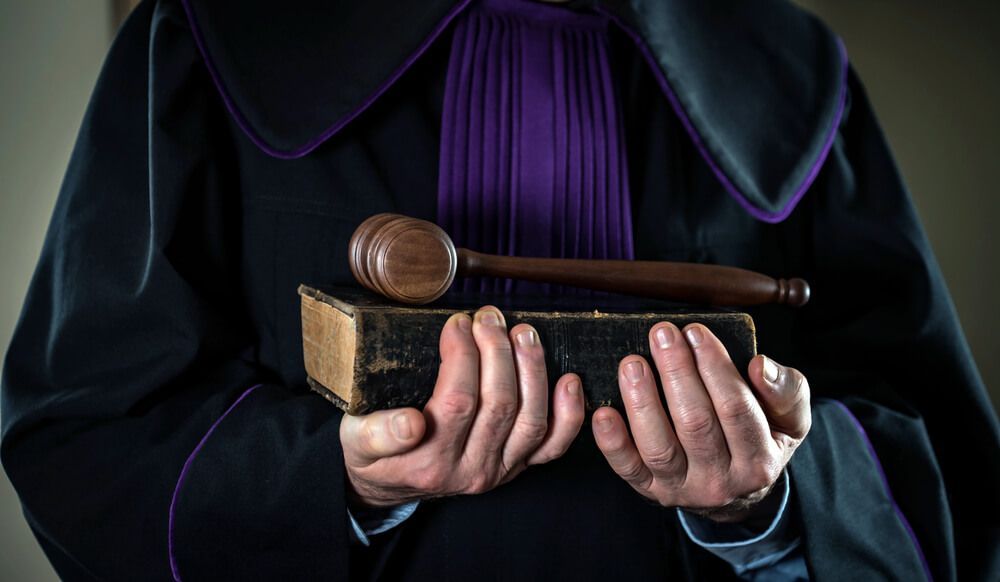
Proving duty of care isn’t always straightforward. In some cases, there may be disputes over whether a duty even existed. For example, in injuries involving trespassers or independent contractors, the scope of duty might be unclear.
Even when a duty is clear, showing a direct connection between the breach and the injury can be challenging. Defendants may argue the injury was caused by unrelated factors, pre-existing conditions or the plaintiff’s negligence. For example, a store owner might argue that a customer’s slip and fall was due to their own carelessness, not a wet floor that should have been cleaned up.
Have a Lawyer Define How Duty of Care Impacts Your Personal Injury Case
Understanding duty of care is one thing, but proving it in a personal injury case is another. The laws surrounding duty, breach and negligence can be complex, and defendants often fight hard to avoid liability.
At Sargon Law Group, we have extensive experience helping accident victims hold negligent parties accountable. From gathering evidence to negotiating with insurance companies, our team ensures your rights are protected at every stage.
If you’ve been injured and believe someone else failed in their duty of care, don’t navigate the process alone. Learn how our qualified personal injury attorneys can help you pursue the compensation you deserve.

